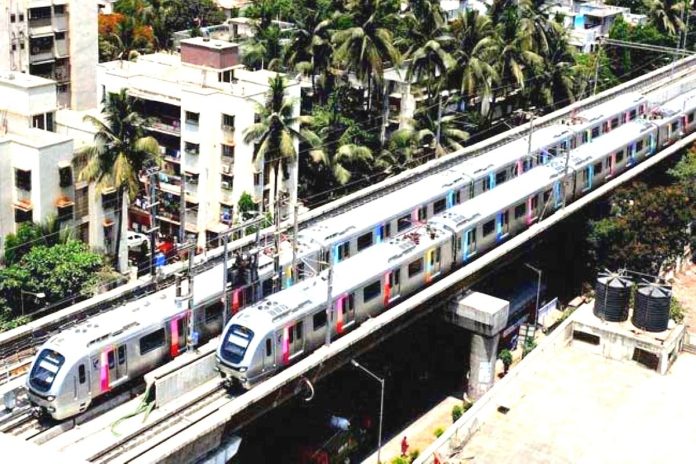Both of the upcoming Metro lines will provide direct transportation to the airport terminal area, eliminating the need for autos or cabs.
Connectivity to Chhatrapati Shivaji Maharaj International Airport (CSMIA) of Mumbai is set to significantly improve with the introduction of two upcoming Metro projects.
These projects include Line-7A, which will connect Gundavali Metro station to CSMIA, and the underground Metro Line-3, which spans from Colaba to Bandra to SEEPZ.
Tunneling work for the 3.4-kilometre Mumbai Metro Line-7A began earlier this month. This extension of the red line, also known as Metro-7, will connect Dahisar East to Gundavali and provide a direct link from Andheri East to the airport.
The operational Metro Line-7, along with the under-construction Metro Line-9, will both contribute to reducing travel time from Mira Bhayander to the airport. This will result in a significant decrease from the previous two-hour road journey to just one hour.
In addition to Line-7A and Line-9, the underground Metro Line-3 will also offer convenient access for commuters. This line will allow travellers from Colaba to easily reach the airport station, known as CSMIA T2.
Both of the upcoming Metro lines will provide direct transportation to the airport terminal area, eliminating the need for autos or cabs. This is a significant improvement compared to the existing airport station on Metro Line-1 (Ghatkopar to Versova via Andheri).
Not only will the upcoming Metro Line-1, Line-6, 2A, and 2B offer direct connectivity, but they will also have interchange stations. This will greatly enhance travel options within the city and suburbs.
According to an official from the Mumbai Metropolitan Region Development Authority (MMRDA), Metro Line-7A is expected to be operational by December 2025.
The tunnelling work for Metro Line-7A has already commenced, with a partial elevated alignment that runs parallel to the Western Express Highway and Sahar elevated road. MMRDA is responsible for implementing this project.
The Mumbai Metro Line-3 is a 33.5-km-long underground stretch connecting the busiest and most congested regions in Mumbai.
The metro line will connect Cuffe Parade business district in the extreme south of the city, to SEEPZ in the north-central, with 26 underground and one at-grade station.
The completion of the Metro Line-3 CSMIA T2 station is nearly at 91 per cent. This station is part of the Phase 1 (Aarey to BKC) alignment of the underground Metro Line-3. Phase 1 (Aarey to BKC) is expected to be ready by December of this year or early next year.
The Mumbai Metro Rail Corporation Ltd (MMRCL) is responsible for implementing the underground Metro Line-3 project.
Mumbai Metro Line 3 Route Map ( MMRCL)
Dr Sanjay Mukherjee, IAS, the MMRDA commissioner, highlights the significance of completing Metro Line-7A in connecting the international airport to the MMR region, reports Indian Express.
This Metro line will serve as a reliable link, seamlessly connecting the western and eastern suburbs of Mumbai, along with South Mumbai, Mira Bhayander, and Thane.
It will be part of a comprehensive network of Metro lines, including 7, 2A, 2B, and 9, as well as underground Line-3, Line-4, and Metro-10.
Mukherjee emphasises that this connectivity will provide commuters travelling to the airport with a hassle-free journey and convenient access to the T2 terminal.
The MMRCL spokesperson states that Metro Line-3 is expected to be the busiest single line in Mumbai, connecting multiple major hotspots from Colaba to SEEPZ. The airport stations of MML-3 are crucial as they will connect the T1 and T2 terminals.


